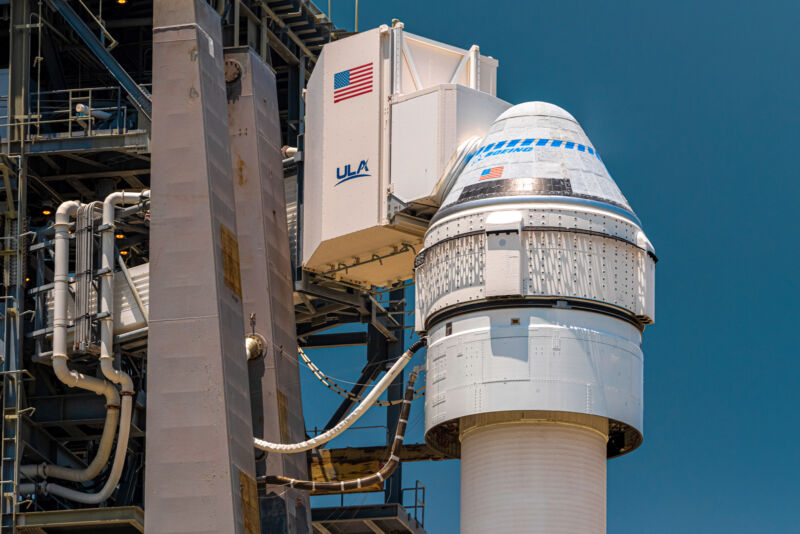
For a week leading up the much-anticipated launch of Boeing's Starliner test flight on Tuesday, officials with NASA and the aerospace company said the spacecraft and its Atlas V rocket were ready to go. Their big concern, they said, was weather—with frequent afternoon thunderstorms along Florida's east coast.
On Tuesday morning, a few hours before the launch window opened, weather conditions along the coast looked pretty good. But Boeing had to scrub the launch attempt anyway, citing a problem with a valve in the spacecraft's reaction control system, which helps the vehicle maneuver in space.
Boeing and NASA engineers then spent Tuesday afternoon attempting to determine the cause of "unexpected valve position indications" within the spacecraft's propulsion system. Presumably, they were trying to determine whether these valves were actually in the wrong position in reality, or if the indications were due to some sort of errant sensor reading.
On Tuesday evening the engineers were unable to reach a conclusion, and Boeing said it was canceling a potential launch attempt for Wednesday. In a statement, the company declined to say when it was targeting for its next attempt, and that it needed more time to investigate the issue.
“We’re going to let the data lead our work,” said Boeing’s Commercial Crew Program vice president and program manager John Vollmer. “Our team has worked diligently to ensure the safety and success of this mission, and we will not launch until our vehicle is performing nominally and our teams are confident it is ready to fly.”
Although the next opportunity after Wednesday to launch Starliner comes this weekend on August 7 and 8, sources indicated to Ars that the spacecraft may have difficulty making that launch window. The company's engineers will probably need more than a day or two to work the issues.
Starliner does not have an infinite launch window, however. The first conflict comes late this month, when SpaceX's CRS-23 International Space Station supply mission is due to launch on August 28. There are only two docking ports available for these kinds of missions on the station. Presently one is occupied by a Crew Dragon, and the CRS-23 Cargo Dragon will occupy the second port. If NASA holds to a late August launch of CRS-23, Boeing's Starliner would need to launch by around August 20 in order to have enough time to get to the station and depart before Cargo Dragon arrives.
On NASA's current schedule, CRS-23 will undock from the space station on September 30, opening a port for Starliner during the month of October. But then there's another complication: NASA has a high-priority science mission, Lucy, with a 21-day launch window opening in mid-October. That mission will also fly on an Atlas V rocket.
United Launch Alliance requires a minimum of two or three weeks for final preparations of an Atlas V launch, so even if Starliner launched on October 1, it would likely eat up some time from Lucy's launch window. Giving up a chunk of that would be risky for the asteroid mission, which faces a delay into 2022 if it misses its window. It seems probable that NASA would prioritize the Lucy mission over Starliner's test flight.
The bottom line is that for Boeing, NASA, and United Launch Alliance, it's really important to try to get Starliner off the pad before mid-August, or the mission could face lengthy delays.
Already, 19.5 months have passed since an initial test flight of Starliner ended in a "high visibility close call" during which the vehicle was almost lost both shortly after launch, and shortly before reentering the atmosphere. This caused NASA to initiate an investigation into Boeing's safety culture and demand a major revamping of Boeing's flight software. Boeing also agreed to pay for a second test flight, at a cost of $410 million, out of its own resources.
After much effort Boeing finally returned to the pad this week. After Tuesday's scrubbed launch, though, the rocket and spacecraft will now roll back to an integration hangar for further troubleshooting.
Article From & Read More ( Starliner delayed again, and its launch window may close soon - Ars Technica )https://ift.tt/3fxXMp9
Science
No comments:
Post a Comment